|
We see it everywhere. Editors and agents are seeking: Character Driven Picture Books. But what exactly does that mean?
Pam Calvert from Woven with Pixie Dust wrote a fantastic post about Character Driven Picture books. Her list of Must Haves consists of: Must haves: · Unique characteristics that go outside the box · Have an emotional connection with children · The “star” of the book · Big internal conflict that outweighs the external conflict · Story focus is on the main character not on the plot (although most title character driven books have wonderful plots!) · If you take that particular character away from the story, it falls apart or you wouldn’t have a story. · Character image is instantly recognizable (this is beyond a writer’s control, but if you’ve written your character well, you won’t have to worry about this.) Be sure to check out her entire post. Wendy Silvano, author of Just One More and Turkey Trouble gives a fantastic definition of character driven picture books: A character-driven picture book is just what it says—a picture book where the character drives the plot. Think of it this way: In a character-driven picture book the story is more about the character than about the plot. What happens in the story happens because of the attitudes, personality and character traits of the main character. She also gives a great list of eight questions to ask when trying to figure out if your character is compelling enough. Be sure to check out her entire post. I've spent some time researching resources for Character Driven Picture Books. Character Driven Books to Read http://www.pinterest.com/mandycyates/character-driven-picture-books/ Blog Posts and Articles http://alaynekaychristian.wordpress.com/tag/character-driven-picture-books/ http://literaticat.blogspot.com/2011/07/whole-lot-of-info-about-picture-books.html http://carmenoliver.livejournal.com/23091.html http://operationawesome6.blogspot.com/2012/10/salina-yoon-on-difference-between.html http://cfitewrite.blogspot.com/2013/01/notes-on-character-driven-pb.html http://picturebooksonly.wordpress.com/2011/04/21/transcipt-21-april-what-drives-your-pb-character-or-plot/ https://suite101.com/a/plotting-your-book-for-children-a52757 http://writeoncon.com/08/17/irresistible-picture-book-characters/ PDF List http://alaynekaychristian.files.wordpress.com/2014/01/character-driven-picture-books-suggested-reading-list.pdf Video https://www.youtube.com/watch?v=F4XVn1bTlME Industry http://metro.nyscbwi.org/news/in-a-weak-economy-agents-look-for-safe-books-2/ Courses http://www.childrensbookacademy.com/writing-character-driven-stories.html Are you currently writing a Character Driven Picture Book? If not, use the resources above and give it a try. Should you write your picture book in rhyme? Take the following quiz to find out! 1. If you take the rhyme away, do you still have a good story? (With multidimensional characters, a structured plot, good pacing, and a satisfying resolution?) 2. Do your sentences follow normal sentence structure (and not sentence structure used by Old King Cole or Yoda?) 3. Have you avoided forced rhymes or near rhymes? 4. Have you avoided common, one-syllable, predictable rhyme schemes? (cat/hat/rat.) 5. Do you know the following terms: scansion, meter, stressed, unstressed, anapest, iamb, trochee, and dactyl? 6. Have you read and studied hundreds of rhyming picture books? 7. Can you identify the types of rhythms in picture books? 8. Are you in a critique group? Or have you had a professional critique from someone well versed in poetry? 9. Do you practice writing in rhyme consistently? 10. Have you taken a course in poetry/rhyming picture books that will help you answer yes to all of the above? If you can answer YES to all of the above, then go for it! You are ready to write your picture book in rhyme. If you answered NO to any of the following, then you may want to check out the resources below that will help get you on your way! Read, Read, Read! http://www.pinterest.com/mandycyates/rhyming-read-alouds/ http://www.amazon.com/BEST-Funny-Rhyming-Picture-Books/lm/2PSSOX34Z9W6U https://www.goodreads.com/shelf/show/rhyming-picture-books Online Tools: http://prosody.lib.virginia.edu/ http://www.rhymezone.com/ Helpful Articles, Blogs, Websites, and Posts: http://taralazar.com/2012/03/13/why-do-editors-say-not-to-write-in-rhyme/ http://hopevestergaard.com/writers/articles/rhymes-and-misdemeanors/ http://www.rhymeweaver.com/ http://www.themetermaids.blogspot.com/ http://www.dorichaconas.com/Icing%20the%20Cake%20page.htm http://kidlit.com/2009/09/05/rhyming-picturebooks-a-rhyme-with-reason/ http://www.thomastaylor-author.com/2011/03/18/how-to-write-a-rhyming-picture-book-and-get-it-published-part-1-a-writers-perspective/ http://picturebookden.blogspot.com/2012/03/how-not-to-write-rhyming-picture-book.html Craft Books: Writing Picture Books: A Hands-On Guide from Story Creation to Publication Paperback by Ann Whitford Paul http://www.amazon.com/Writing-Picture-Books-Hands-On-Publication/dp/1582975566/ref=sr_1_1?ie=UTF8&qid=1392602226&sr=8-1&keywords=writing+picture+books The Nuts and Bolts Guide to Writing Picture Books by Linda Ashman http://www.amazon.com/Bolts-Guide-Writing-Picture-Books-ebook/dp/B00FSOUF9Y/ref=sr_1_1?ie=UTF8&qid=1392602298&sr=8-1&keywords=nuts+and+bolts+to+writing+picture+books Poem Making: Ways to Begin Writing Poetry by Myra Cohn Livingston http://www.amazon.com/Poem-Making-Ways-Begin-Writing-Poetry/dp/0060240199/ref=sr_1_2?ie=UTF8&qid=1392602363&sr=8-2&keywords=myra+cohn+livingston A Poetry Handbook by Mary Oliver http://www.amazon.com/A-Poetry-Handbook-Mary-Oliver/dp/0156724006/ref=sr_1_6?ie=UTF8&qid=1392602426&sr=8-6&keywords=mary+oliver Rules for the Dance by Mary Oliver http://www.amazon.com/Rules-Dance-Handbook-Writing-Metrical/dp/039585086X/ref=pd_bxgy_b_img_z A Poet’s Ear: A Handbook of Meter and Form by Annie Finch http://www.amazon.com/Poets-Ear-Handbook-Meter-Form/dp/0472050664/ref=sr_1_5?s=books&ie=UTF8&qid=1392602578&sr=1-5&keywords=A+poets+handbook The Poet’s Handbook by Judson Jerome http://www.amazon.com/Poets-Handbook-Judson-Jerome/dp/1582971366/ref=sr_1_1?s=books&ie=UTF8&qid=1392602578&sr=1-1&keywords=A+poets+handbook The Poet’s Companion by Kim Addonizio http://www.amazon.com/Poets-Companion-Pleasures-Writing-Poetry/dp/0393316548/ref=sr_1_3?s=books&ie=UTF8&qid=1392602578&sr=1-3&keywords=A+poets+handbook In the Palm of Your Hand by Steve Kowit http://www.amazon.com/Palm-Your-Hand-Portable-Workshop/dp/0884481492/ref=sr_1_1?s=books&ie=UTF8&qid=1392602932&sr=1-1&keywords=In+the+palm+of+your+hand Ordinary Genius: A Guide for the Poet Within by Kim Addonizio http://www.amazon.com/Ordinary-Genius-Guide-Poet-Within/dp/0393334163/ref=pd_sim_b_8 Train Your Ear with Poetry Books: Douglas Florian: MAMMALABILIA MaryAnn Hoberman: SEVEN SILLY EATERS J. Patrick Lewis: THE LITTLE BUGGERS Alice Schertle: HOW NOW, BROWN COW? Linda Smith: WHEN MOON FELL DOWN Janet Wong: GRUMP Groups to Join: RhyPiBoMo (Rhyming Picture Book Month) https://www.facebook.com/groups/173920209485707/ "RhyPiBoMo is a combination of a learning experience and writing challenge...the challenge is to write better rhyme and poetry. I will offer daily lessons, the bloggers will offer daily inspiration and the participants will apply this to their Rhyming Picture Books! Hopefully, each writer will have one RPB ready for submission on May 1st. The Golden Quill Poetry Contest will be open to RhyPiBoMo participants during the event...more details coming soon! Also, Mira Reisberg and Sudipta Bardhan-Quallen are doing a webinar on April 30th about their upcoming course...Yay!" - Angie Karcher, Creator of RhyPiBoMo RhyPiBoMo Mission Statement: My goal is to guide those aspiring to write rhyme and poetry through the process of learning the craft and offering resources, short lessons, writing prompts and the wisdom of experienced folks in the business to improve the reputation and quality of rhyme and poetry for children. Courses: Children’s Book Academy with Mira Reisberg and Sudipta Bardhan-Quallen The Craft and Pleasure of Writing Poetry for Kids starting May 2014! http://www.childrensbookacademy.com/
Unfortunately, I only had one teacher that read books aloud to the class in elementary school. I always thought “READING” meant filling out a workbook. When forced to choose a book from the library, I would choose odd obscure books because no one was there to recommend awesome books to try. With all good intentions, my mother forced me to learn 200 sight words on flash cards before I entered school. This put me in the “high” reading group at school, but made me despise reading even more. I was the kid that would rather be outside playing or climbing trees.
In middle and high school, I cheated my way through assignments (by getting my sister to read the assignment for me.) I cheated my way through book reports by only reading the back of the book, getting the cliffs notes, or by reading this great comic book series of the Classics. My teachers were impressed that I was choosing to read books like Jane Eyre and Moby Dick. These techniques got me somewhat through college as well. I remember even watching the movie Hamlet just so I wouldn’t have to read. (Big mistake.) So I halfway through college, I switched my major from Vocal Performance to Education (thinking it would be more practical) and it was then I discovered a love of reading. At 20 years old I learned to love reading because I had an education professor that would start and end every single class by reading aloud a…..PICTURE BOOK! Being exposed to picture books in such a fun way (with no worksheets or quizzes attached and hearing the way she read with such enthusiasm) is what turned me into a reader. And I realized that I wanted to share that same magical experience with other Book Haters like myself. Over the past 11 years of being an educator, I’ve realized that kids don’t hate reading. Connecting kids to the right books is what it is all about! I recently read this great article called Setting Children Up To Hate Reading. One of the best quotes from the article state, “The American Academy of Pediatrics notes the critical factor as to how a student will learn to read “is not how aggressively,” the child is given instruction, but rather their “own enthusiasm for learning.” So how do we ensure this enthusiasm? 1. Read aloud to children (even when they are very young.) 2. Show kids “your” love and enthusiasm of books and reading. 3. Expose them to a wide variety of books. 4. Talk about books. 5. Talk about authors. 6. Take them to the library. 7. Take them to the bookstore. 8. Tell them how much you love the smell of books. J 9. Find what interests them (by exposing them to a wide variety of books.) 10. Kids are funny! Find humorous books. 11. Find books that are fun to read aloud and fun to listen to. (Ones with rhyme, rhythm, or wordplay.) 12. Find books with great characters: characters they will love, characters they will feel sorry for, root for, cheer for, characters that are funny, characters that are active, characters that are flawed. 13. Be enthusiastic about books yourself! They will value what you value. Check out a previous blog post of mine called How To Definitely Make Kids Hate Books and Reading. There is such a natural connection between reading and writing. After I developed this passion for placing the right books into the hands of readers, I developed a passion to write books that I could place into the hands of a reader. And I’m so excited I’ve followed my dream to do so! I pursued an MFA in creative writing for children, joined SCBWI, got involved in a critique group, and last fall I took Mira’s course The Craft and Business of Writing Children’s Books. And, as I’ve mentioned before, I’m excited to be assisting with course this winter, which starts TODAY!!!! Guess what? It’s not too late to join! Let’s start developing readers together! Let’s get them excited about reading. Let’s help them develop a love of books.
It can take them forever. Some don’t even respond because your submission has fallen through the cracks or that’s just their policy. And then…., finally…., you get either of the former responses with that longed for yes, or they break your heart with a no. So what’s up with that? How does an agent choose who they represent? I’d like to start by saying there is no one surefire way or formula that agents use to choose who they represent. Each agent has different criteria that exists somewhere on a spectrum between loving your work, liking you, and being able to sell your work. Sometimes they choose strategically in terms of what they know editors are looking for and what they see as future marketable trends. Sometimes they choose by intuition or gut, but usually it’s a combination of both. Apart from the heartfelt creativity that goes into writing, illustrating, editing, art directing and designing a book, children’s book publishing is a business. Until an agent has been in the business a while, one of their clients has a huge hit, or several have big hits, it pays very little for a lot of work (sometimes a few hundred for months of work). In fact more agents are teaching these days to supplement their income, something that used to be verboten in the past because they just can’t survive on what they earn as an agent. I recently wrote a post about why so many editors and agents are overworked and overwhelmed in relation to the last decade or so of the history of the publishing industry. It’s on the fabulous Tara Lazar’s blog. Tara is the founder of the Picture Book Idea Month (PiBoMoId) event, which I encourage everyone to participate in. Here’s the link http://taralazar.com/2014/01/13/outside-inside-publishing/ I think it’s been my most popular post ever based on the comments. This article explains why agents have to have screening processes. For me, after knowing authors’ and illustrators’ work either through my courses or the internet, the first thing is professionalism beginning with how well written your submission is. I recently did a webinar/workshop on this topic that will be part of the most extravagant ever upcoming interactive craft and business of writing children’s books e-course with Sudipta Bardhan-Quallen, Mandy Yates and me (and probably my last time teaching it) here http://www.childrensbookacademy.com/writing-childrens-picture-books.html But whether you can take the course or not, here’s the essence of what I shared: Publishing is relational. Meet editors and agents at conferences and events or online in courses or webinars or any way that you can in an organic and respectful way. You need a fantastic submissions package. Here’s a little checklist:
I know some of you may be squirming, but as I mentioned earlier, publishing is a combination of business, creativity, and heart that varies on a spectrum according to each publisher or agent. Agents and publishers cannot stay in business without marketing and sales. That’s why we changed our logo over at the Children’s Book Academy to Boris, the heartful, creative, businessman bear, to help students learn those things in practical ways. We also have Marge, the Can Do wife (Boris likes strong women), and Baby Buddha Bear, who will be coming soon (but that’s another story). Finally: Know that whether an agent accepts you or not is a combination of how much they respond to your work, whether they think they can sell it, whether you look like you are going to be wonderful to work with, and just plain luck as to whether they are having a good day or are feeling like they have too many clients already and are overwhelmed. Use Don Miguel Ruiz’s agreement from the Four Agreements to never personalize anything. A rejection says nothing about you or your work other than you may not be a good fit for that agent at that time or your work might not be quite ready yet. Be the best that you can be as a lifelong learner taking courses, participating in challenges and fabulous critique groups, attending conferences and doing whatever you can to improve your craft and find out what’s happening in the contemporary children’s book market. And keep submitting. I hope this post has been helpful. If it was helpful, please leave a comment below. Mira Reisberg is the founding instructor of the Children's book Academy. In her full life she has worked as an award-winning best-selling illustrator, writer, art director, designer, freelance editor, children's literature professor, and mentor/teacher to many now very successful former students. Last year she also became a children's literary agent. Mira is currently phasing out of teaching, which she dearly loves, to focus more on her agenting, which she also dearly loves. Mira has a picture book writing e-Course starting February 10th right here!! |
We are so excited to be mixing things up at CBA, beginning with some delicious additions to the Blogfish. Meet our awesome bloggers!!
Here's our lineup: 1st Mondays begin with former school psychologist Dr. Debra Collins who will be writing about Social emotional Learning in kidlit and behind the scenes as well as Jewish children's books. 2nd Mondays will feature super smart Melissa Stoller whose career is taking off with several new books. 3rd Mondays will feature our new blogger coming soon. 4th Mondays features new blogger, the fabulous Brentom Jackson, who has a beautiful approach to blogging. And 5th Mondays we'll be taking a break Archives
July 2024
|
|
Discover
|
About Us
|
Join Us
Join our Community and receive a fabulous free gift, KidLit tips, newsletters, scholarship info, contests, and more!
Join our KidLit Mentorship |
Social Media
Interact with our FaceBook Group or follow us on:
|
© 2010-2024 All content on this website is copyrighted. Sorry, all courses are non-refundable.
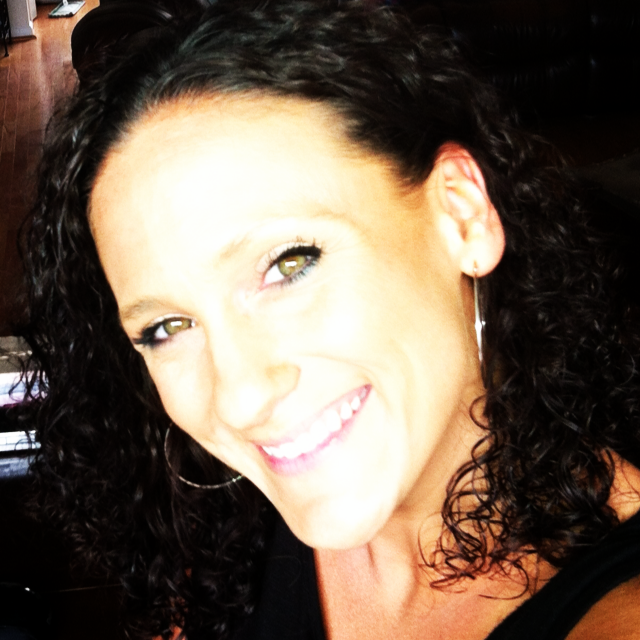
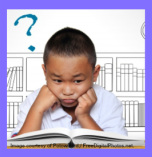
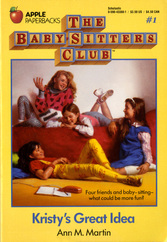
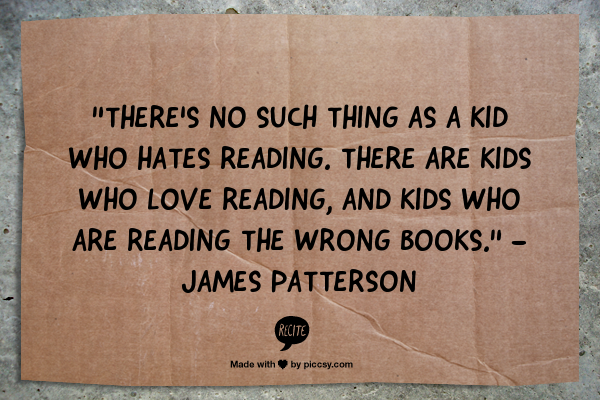
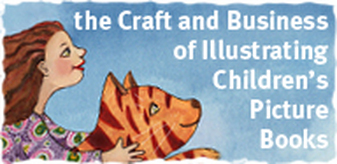
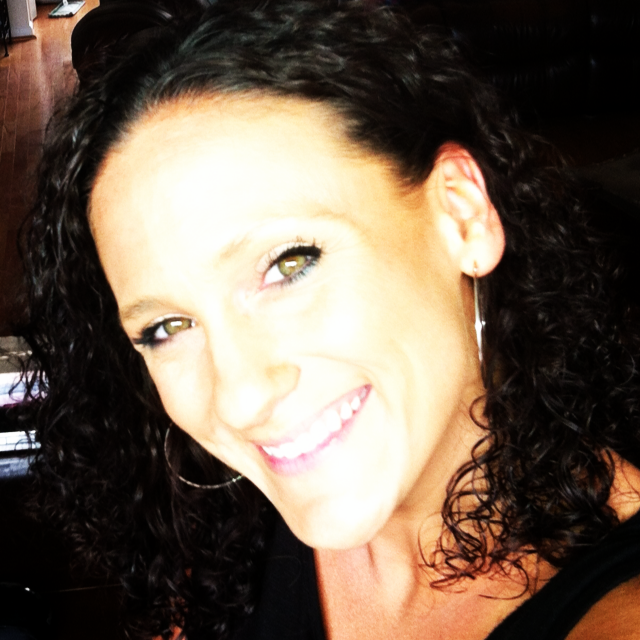
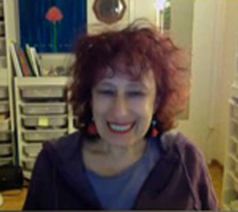

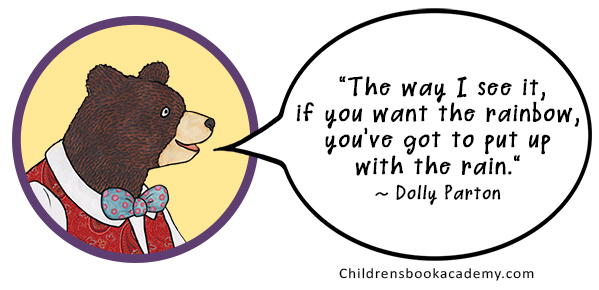
 RSS Feed
RSS Feed
